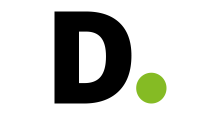Employee attrition is one of the biggest challenges HR leaders face today. High turnover rates not only increase recruitment costs but also disrupt team productivity and morale. Fortunately, with advancements in HR technology and predictive analytics, businesses can now forecast employee attrition before it happens. Attrition prediction software leverages machine learning, artificial intelligence, and workforce analytics to identify early warning signs of disengagement, burnout, or intent to leave. This allows HR teams to take proactive steps in retention, career development, and workforce planning.
What is Employee Attrition Prediction Software?
Employee Attrition Prediction Software is a type of HR technology that uses data analytics, machine learning, and artificial intelligence to forecast which employees are most likely to leave an organization in the near future.
It analyzes a wide range of workforce data—such as employee performance, tenure, compensation, promotions, engagement survey results, absenteeism, manager feedback, and even external labor market trends—to detect patterns linked to turnover. By identifying these risk signals, the software generates attrition risk scores or predictive insights that HR teams and business leaders can use to intervene before an employee decides to resign.
The goal of this software isn’t just to predict who might leave, but also to highlight why employees may be at risk. For example, it may reveal that employees in a particular department are leaving due to lack of career growth opportunities, while another group may be at risk because of workload imbalances.
In this article, we’ll explore the 10 best employee attrition prediction software in 2025, highlighting their features, benefits, and how they help companies build resilient workforces.
1. ADP DataCloud
ADP is best known for payroll and HR services, but its DataCloud platform has evolved into a robust analytics solution. DataCloud provides attrition prediction by combining internal HR metrics with ADP’s massive anonymized benchmarking data. This gives companies unique insights into how their attrition trends compare to others in the same industry. The platform uses machine learning to detect patterns related to employee turnover, such as pay competitiveness, career stagnation, or manager effectiveness. For companies already using ADP for payroll or workforce management, DataCloud offers a natural extension into predictive analytics, helping HR teams reduce costs and improve retention strategies without needing separate tools.
2. Crunchr
Crunchr is a workforce analytics platform designed to simplify HR data for decision-making. Its attrition prediction tools help organizations identify trends and patterns behind employee turnover. By integrating data from HR systems, performance management tools, and engagement surveys, Crunchr creates a unified view of attrition risk. The platform is especially user-friendly, offering intuitive dashboards that make predictive insights accessible to HR professionals without deep analytics backgrounds. Crunchr also enables benchmarking across industries, helping companies understand whether their attrition rates are above or below average. For organizations seeking a straightforward, cost-effective solution, Crunchr provides reliable predictive capabilities.
3. Workday People Analytics
Workday is a leader in enterprise HR technology, and its People Analytics module includes powerful attrition prediction capabilities. By analyzing employee performance, engagement scores, compensation data, and career paths, Workday predicts which employees are at risk of leaving and why. Its AI-driven dashboards provide HR leaders with clear risk indicators, including factors such as job satisfaction, pay equity, and manager effectiveness. With Workday, companies not only gain predictive insights but also actionable recommendations, making it easier to implement retention strategies. The platform’s seamless integration with other Workday HR tools ensures that attrition insights translate directly into recruitment planning, training, and engagement initiatives.
4. SAP SuccessFactors Workforce Analytics
SAP SuccessFactors is widely used by global enterprises for managing human capital. Its Workforce Analytics solution incorporates advanced predictive modeling to identify employees with a high likelihood of attrition. The software tracks multiple variables, including tenure, promotion history, workload, and performance data, to generate risk scores. SAP SuccessFactors excels in visualization, allowing HR leaders to quickly pinpoint departments or regions with higher attrition risk. With integrated talent management and succession planning tools, the software helps organizations create targeted interventions—whether through reskilling, career progression programs, or recognition initiatives. Its scalability makes it particularly effective for large, multinational organizations.
5. IBM Watson Talent Insights
IBM Watson brings the power of AI and natural language processing into workforce analytics. Its Talent Insights solution uses predictive algorithms to highlight employees who may be considering leaving, while also providing reasons behind the predictions. Unlike traditional dashboards, IBM Watson delivers narrative insights, making it easy for HR leaders to understand complex data in plain language. The system also integrates external labor market trends, allowing businesses to compare attrition risk against industry benchmarks. IBM Watson stands out for its transparency and explainable AI, ensuring HR leaders can justify their decisions to executives and stakeholders. For data-driven enterprises, this software offers a future-ready approach to minimizing turnover.
6. Visier People
Visier People is a specialized workforce analytics platform known for its predictive capabilities. Its attrition prediction features rely on historical HR data, employee surveys, and external benchmarks to forecast turnover. What sets Visier apart is its ability to provide “what-if” scenario modeling, allowing HR teams to test the impact of different retention strategies before implementation. For example, HR can simulate how salary increases or flexible work policies might reduce attrition risk in specific teams. The platform also emphasizes diversity, equity, and inclusion, enabling leaders to track attrition patterns across demographic groups. With Visier, companies gain not just predictions, but a strategic view of long-term workforce planning.
7. Oracle Fusion HCM Analytics
Oracle Fusion HCM is a complete human capital management suite with strong predictive analytics features. Its attrition prediction capabilities combine historical employee data with behavioral analytics to forecast future turnover. The system provides HR leaders with dashboards that show which roles, teams, or locations are most at risk, and even suggests proactive steps to reduce attrition. One standout feature is its ability to link attrition predictions with financial impacts, helping executives understand the true cost of turnover. Oracle Fusion’s integration with talent acquisition, learning, and compensation modules ensures that retention strategies are aligned with overall workforce planning.
8. Gloat
Gloat is an AI-powered talent marketplace that helps organizations improve employee engagement, mobility, and retention. Its attrition prediction features are designed to detect when employees may feel stagnant in their roles and at risk of leaving. By analyzing skills, career aspirations, and internal opportunities, Gloat identifies employees who might benefit from a lateral move, upskilling, or a new project. The platform enables HR to proactively match talent with opportunities, reducing voluntary turnover caused by lack of career growth. For companies focused on internal mobility as a retention strategy, Gloat offers a highly effective solution.
9. Eightfold AI
Eightfold AI specializes in talent intelligence and uses deep learning to predict attrition. Its platform analyzes vast amounts of data, including employee skills, career progression, performance metrics, and external labor market signals. By creating a “talent graph” for each employee, Eightfold AI identifies potential flight risks and suggests personalized retention strategies. For example, the software might recommend learning opportunities, promotions, or mentorship programs to re-engage employees at risk. Its global workforce insights also help companies prepare for future skills gaps caused by attrition. Eightfold is particularly popular with companies undergoing digital transformation, where retaining skilled employees is critical.
10. Peakon (Workday Peakon Employee Voice)
Peakon, now part of Workday, is an employee engagement platform with powerful predictive capabilities. It collects continuous employee feedback and engagement data, then applies machine learning to forecast attrition risk. Unlike platforms that rely solely on HR data, Peakon leverages sentiment analysis from employee surveys to detect early signs of disengagement. Managers receive real-time dashboards highlighting at-risk employees and recommended actions to address concerns. By combining engagement data with predictive analytics, Peakon allows organizations to intervene before dissatisfaction turns into resignations. For companies prioritizing employee well-being and engagement, Peakon provides a strong balance of analytics and human insights.
Why Employee Attrition Prediction Software Matters
The cost of losing an employee extends far beyond recruitment expenses. Attrition disrupts team collaboration, impacts client relationships, and erodes institutional knowledge. Traditional HR approaches often focus on addressing turnover after it happens, but predictive software shifts the focus toward prevention. By leveraging AI and analytics, organizations can identify risk factors early—whether they relate to compensation, workload, engagement, or career development.
Attrition prediction software also empowers HR teams to design data-driven retention strategies. Instead of applying blanket solutions like across-the-board raises, companies can personalize interventions based on specific risk profiles. For instance, one employee may need career growth opportunities, while another may benefit from improved work-life balance policies. Predictive tools make these distinctions clear, saving costs while improving employee satisfaction.
Choosing the Right Attrition Prediction Software
Not all organizations need the same level of predictive analytics. Large enterprises with complex global workforces may benefit from platforms like SAP SuccessFactors or Oracle Fusion HCM, which provide deep integrations and scalability. On the other hand, mid-sized companies may prefer more focused solutions like Crunchr or Visier People, which offer simplicity and targeted insights.
When evaluating software, businesses should consider:
- Integration with existing HR systems
- Data transparency and explainability of AI predictions
- Customization for industry-specific challenges
- Actionability of insights—do the predictions come with recommended steps?
- Cost-effectiveness relative to the size of the workforce
Final Thoughts
Employee attrition prediction software has become a critical tool in modern HR strategy. By combining data-driven insights with proactive interventions, businesses can reduce turnover, improve engagement, and build stronger teams. Whether through comprehensive enterprise suites like Workday and SAP or specialized platforms like Visier and Gloat, these tools empower organizations to stay ahead of attrition risks in 2025.
Companies that embrace predictive analytics today will be better positioned to retain top talent, maintain productivity, and sustain long-term growth in an increasingly competitive labor market.













